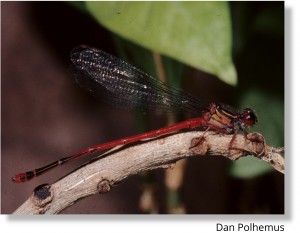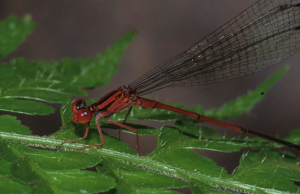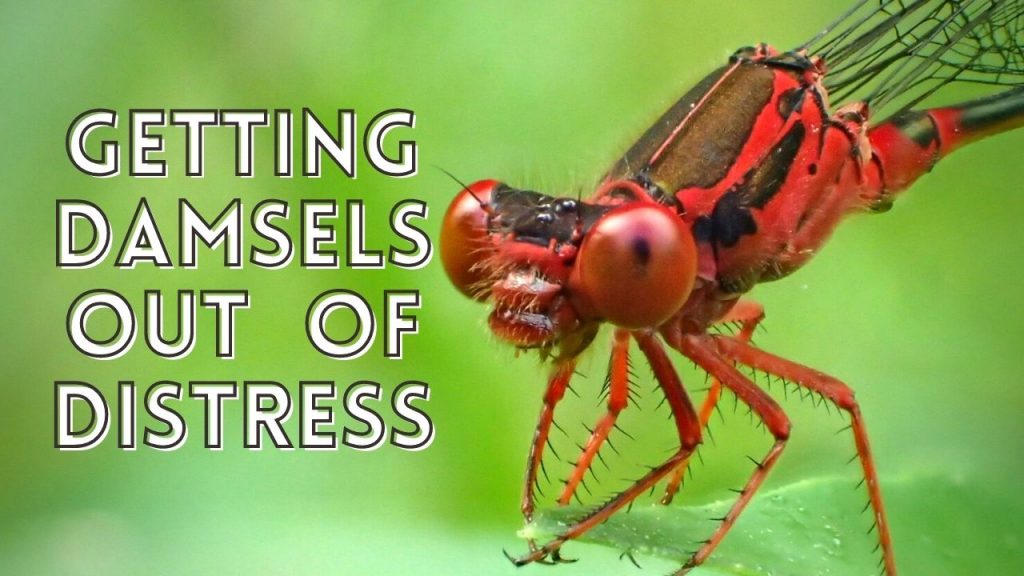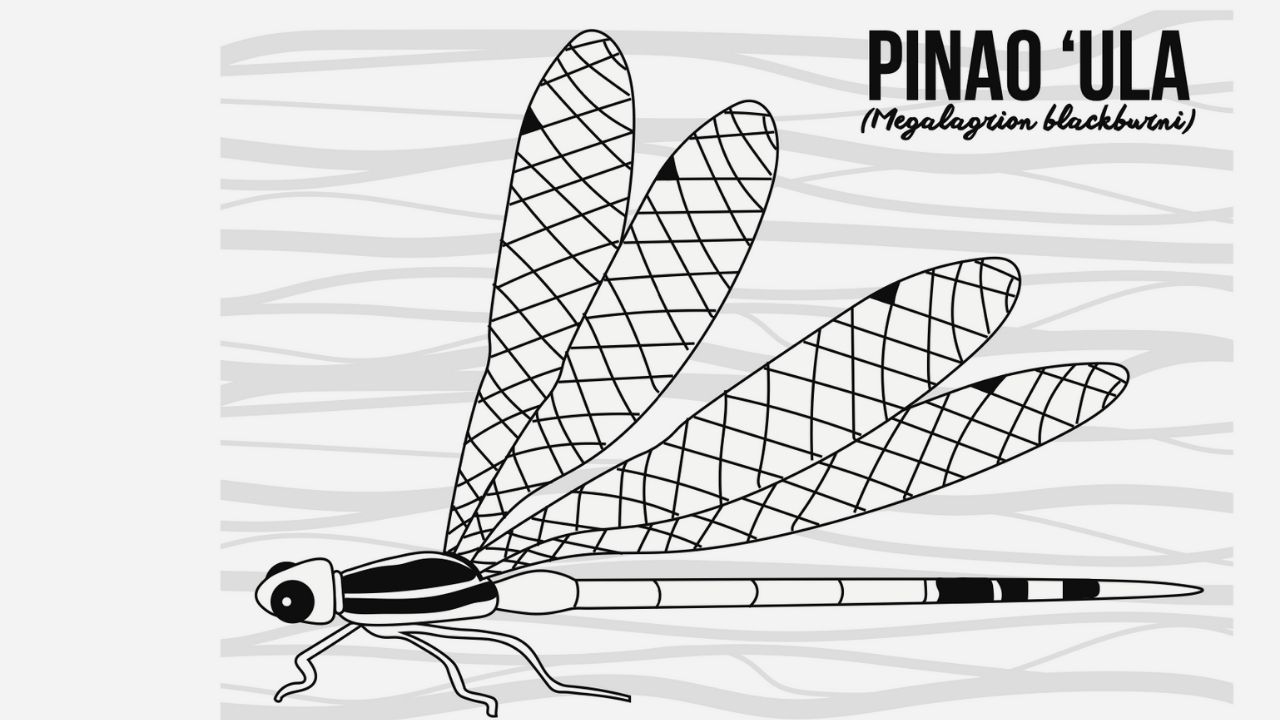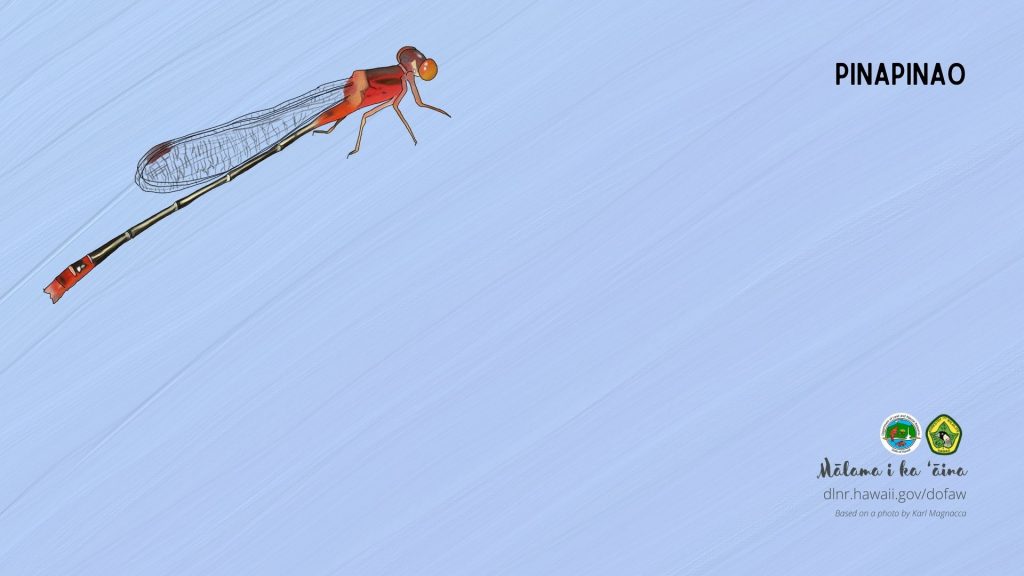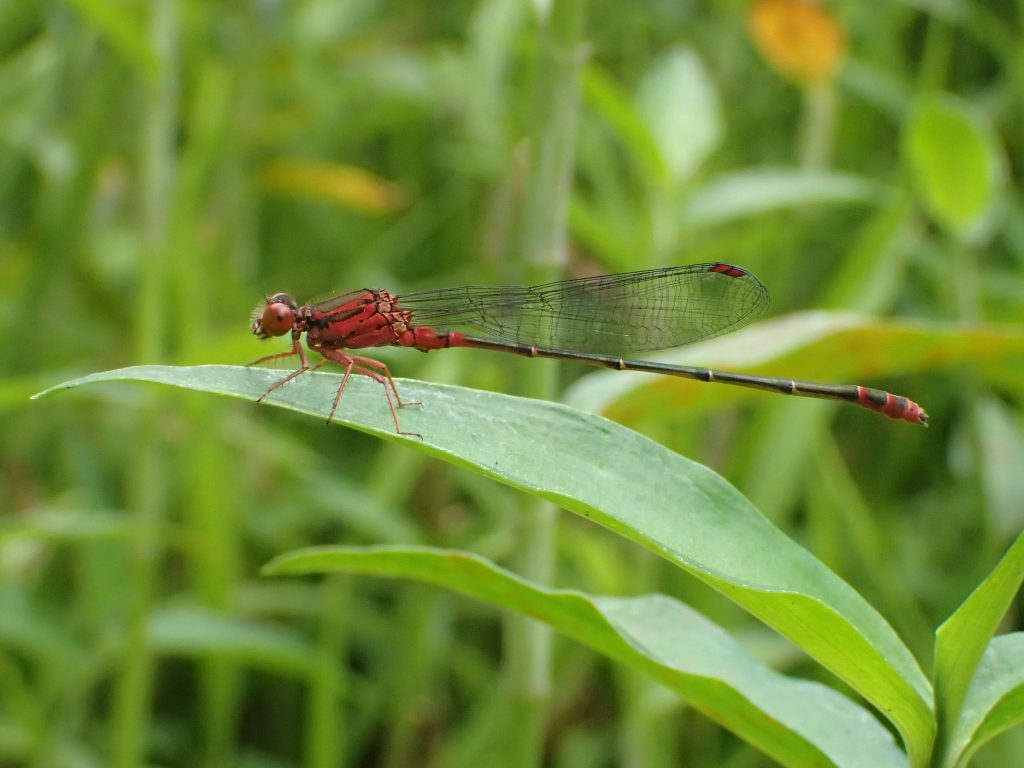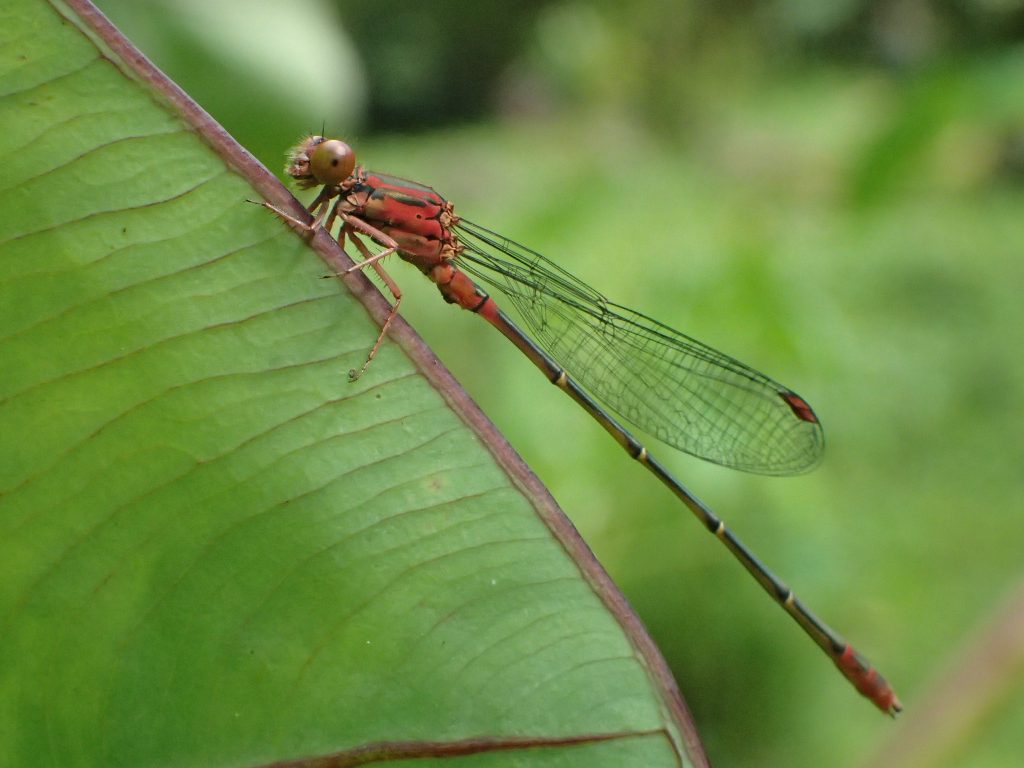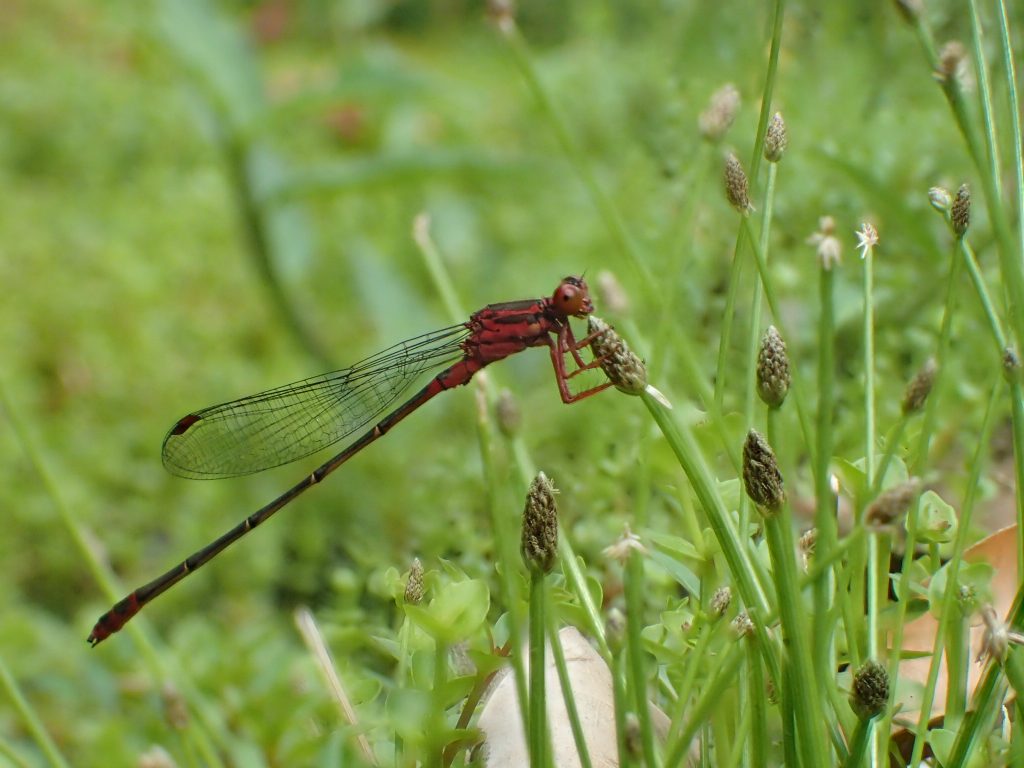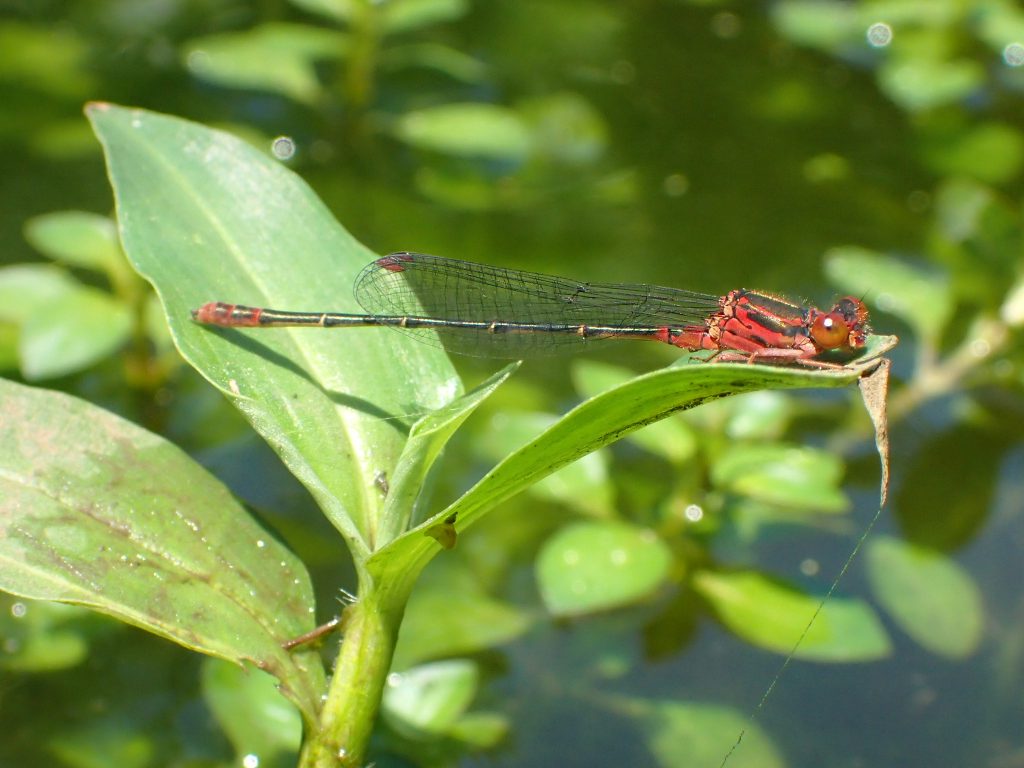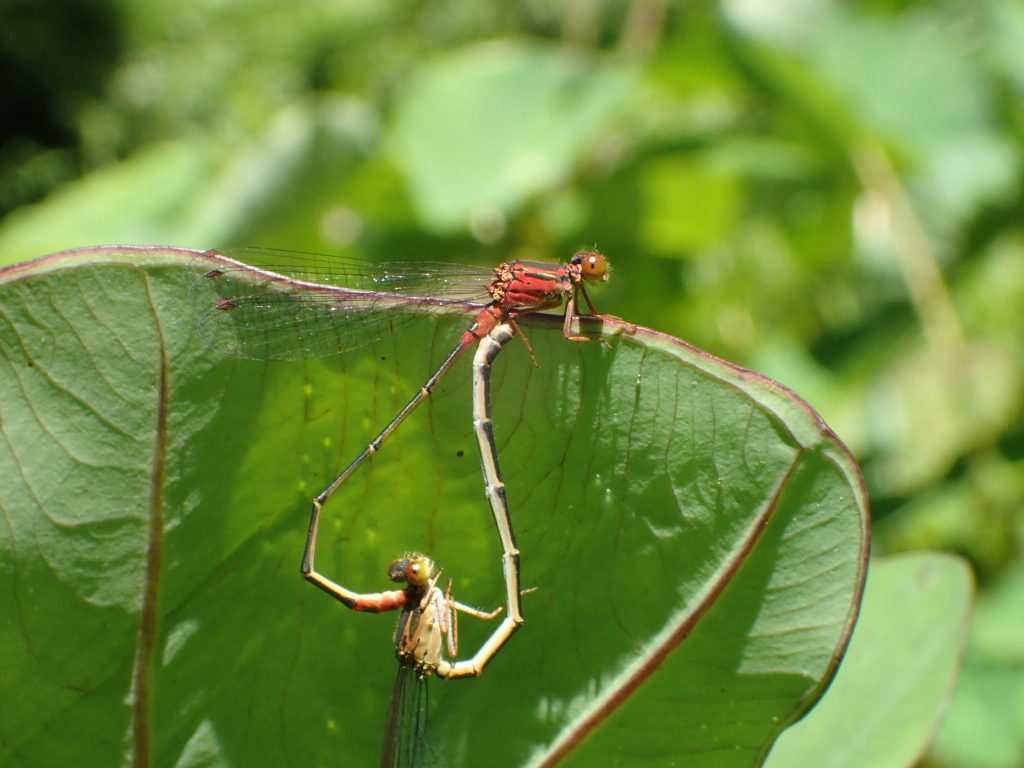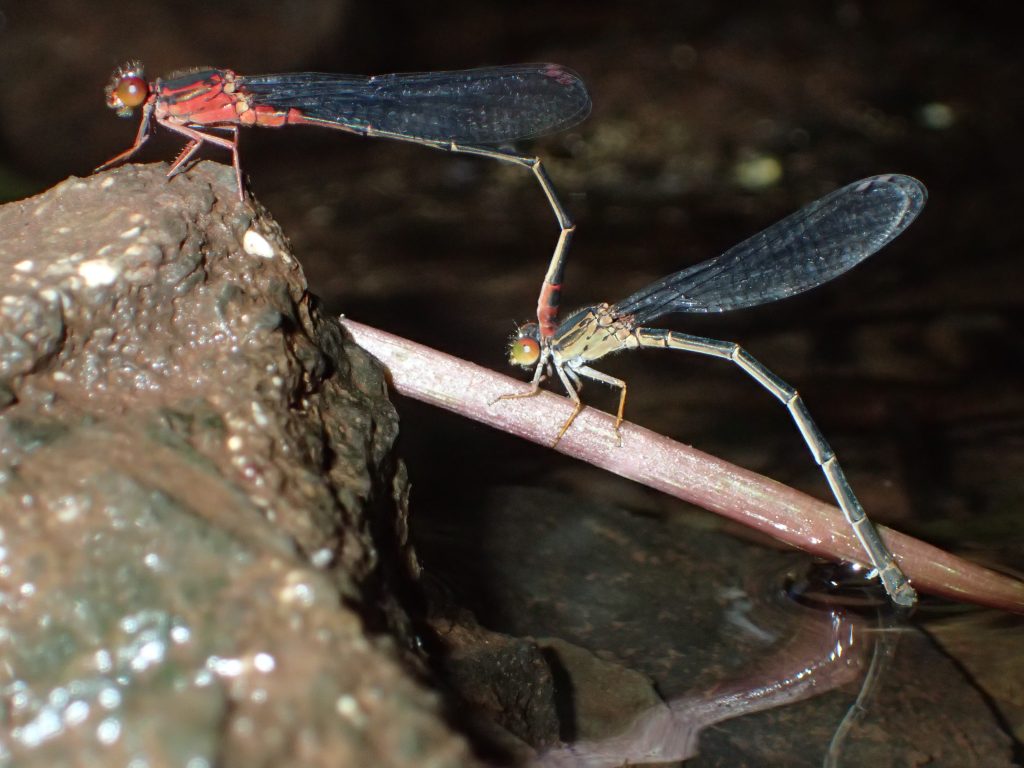Pinapinao (Damselflies)

Names
- Pinapinao
- Damselflies
- Megalagrion spp.
Conservation Status
Six endemic damselflies (Megalagrion leptodemas, M. nesiotes, M. nigrohamatum nigrolineatum, M. oceanicum, M. pacificum, and M. xanthomelas) are federally listed as endangered.
Species Information
Damselflies are flying insects associated with stream and wetland habitats. They are closely related to dragonflies, but can be told apart by their smaller, more delicate bodies and the way they fold their wings along their backs when at rest. Hawai‘i’s damselflies are a fascinating group with remarkable differences in colors and habits between species. They used to be common in Hawaiian stream and wetland environments but pressure from agriculture, stream disturbance and introduced species have resulted in some species becoming endangered. The windward Ko‘olau Mountains support a number of damselfly species and the stream habitats of the Kaluanui Natural Area Reserve are a good place to find them.
Damselflies have large compound eyes, two pairs of large membranous wings, and a long, thin abdomen. They do not sting. Damselflies are weak fliers, and at rest most hold their wings together above the body. Many damselfly species in the genus Megalagrion are endemic to single islands or ridges, and at least ten of the 23 species in the genus are considered at risk. M. oahuense is one of the few truly terrestrial damselflies in the world.
A few examples of Hawaiʻi’s damselflies are below.
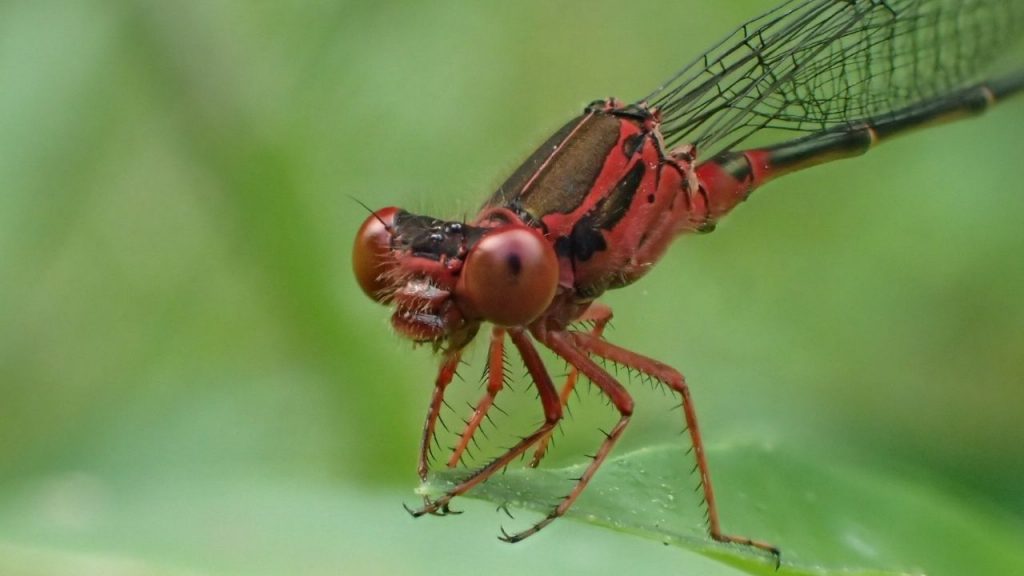 |
Orange-black damselfly (Megalagrion xanthomelas) The orangeblack Hawaiian damselfly (M. xanthomelas) was once common in Hawaii, breeding in coastal and lowland ponds, marshes, and streams on most of the main Hawaiian Islands. However, because it is a lowland species, it has been one of the most heavily impacted by habitat modification and the introduction of mosquito fish, which thrive in the same types of habitats and reach high densities. Currently, this species is known from small, fragmented populations on Oahu, Maui, Molokai, and Hawaii Island. For decades, M. xanthomelas on Oahu has existed in only a single population confined to a 100 m stretch of stream at Tripler Army Medical Center (TAMC), and its situation is precarious. HIP staff are working collaboratively with USFWS, UH and OANRP to raise and release M. xanthomelas and introduce them into fish-free habitat to help ensure the species survival. |
|
|
Oceanic Hawaiian damselfly (Megalagrion oceanicum) The Oceanic Hawaiian damselfly is a large-bodied species only found on O’ahu and listed as endangered. Adults are approximately 2 inches in length with a wingspan of up to 2.2 inches. Males are red/orange with black markings, while females are pale green. This species breeds in stream rapids and on waterfall faces. Previously found in both the Waianae and Ko‘olau mountains, it is now only present in the windward Ko‘olau mountains. |
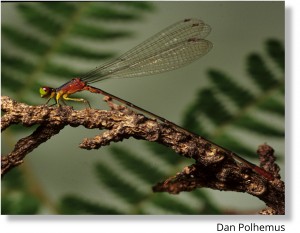 |
Blackline Hawaiian damselfly (Megalagrion nigrohamatum nigrolineatum) This subspecies of Blackline Hawaiian damselfly is only found on O‘ahu and a listed endangered species. Adults are 1.4 to 1.8 inches in length with a wingspan of up to 2 inches. Markings on this brightly colored species are red on the upper half of the head and eyes, with lime green to blue-green coloration below. Its body may have yellow, orange or red markings. It breeds in pools in the headwaters and mid-reaches of streams. It was last seen in the Waianae mountains in 1980, but is still found in the Ko‘olau mountains and seems to tolerate disturbed habitats fairly well. |
|
pc: Dan Polhemus, USFWS |
Crimson Hawaiian damselfly (Megalagrion leptodemas) This small, relatively slender damselfly is found only on Oʻahu. It previously occurred in both the Waiʻanae and Koʻolau mountains, but now is present in small numbers in the Koʻolau mountains only. |
 pc: Dan Polhemus, USFWS pc: Dan Polhemus, USFWS |
Flying earwig Hawaiian damselfly (Megalagrion nesiotes) This large damselfly is distinguished by its blue and black color pattern and enlarged terminal appendages of the male. Females are brown with black stripes on the thorax. This species was historically known from windward East Maui and Hawaiʻi, mostly below 914 meters in elevation. |
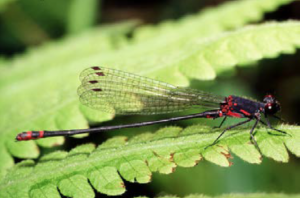 pc: Hank Oppenheimer pc: Hank Oppenheimer |
Pacific Hawaiian damselfly (Megalagrion pacificum) This moderately-sized damselfly is distinguished by a red and black color pattern on the males, and females with a mostly black thorax marked with light green. Historically this species was found in the lowlands of all the main islands except Niʻihau and Kahoʻolawe. It apparently disappeared from Oʻahu first, around 1910, and later from Kauaʻi and Lānaʻi. Recent surveys have found it at seven streams on Molokaʻi (with possibly more that are unsurveyed), fourteen on Maui, and only one on Hawaiʻi. |
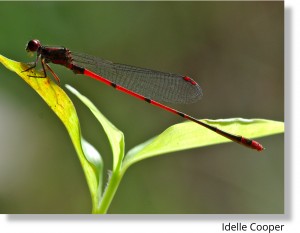 |
Hawaiian Upland damselfly (Megalagrion hawaiiense) The Hawaiian Upland damselfly is found on all of the major Hawaiian islands except Kaua‘i, with a wide variation in color across its range. In the windward Ko‘olau mountains, males have an unusual dark blue and black coloration, compared to the more common orange and black form found in the leeward Ko‘olau and Waianae mountains (as well as on other islands). This species breeds in the upper reaches of small, spring-fed streams. |
Distribution
Damselflies are known from all the Main Hawaiian Islands except for Kaho‘olawe.
Habitat
Larvae and adults occur in or near a wide range of aquatic habitats (e.g., streams, plunge pools, reservoirs, anchialine pools, lowland swamps and marshes), montane forests and bogs, and lowland habitats.
Threats
- Habitat loss or degradation caused by water diversions and disturbance by feral ungulates.
- Predation of naiads by non-native invasive invertebrates, fish, and frogs.
Explore from Home
Below are some of our education materials related to pinapinao. Find more videos and activities on our Education pages.
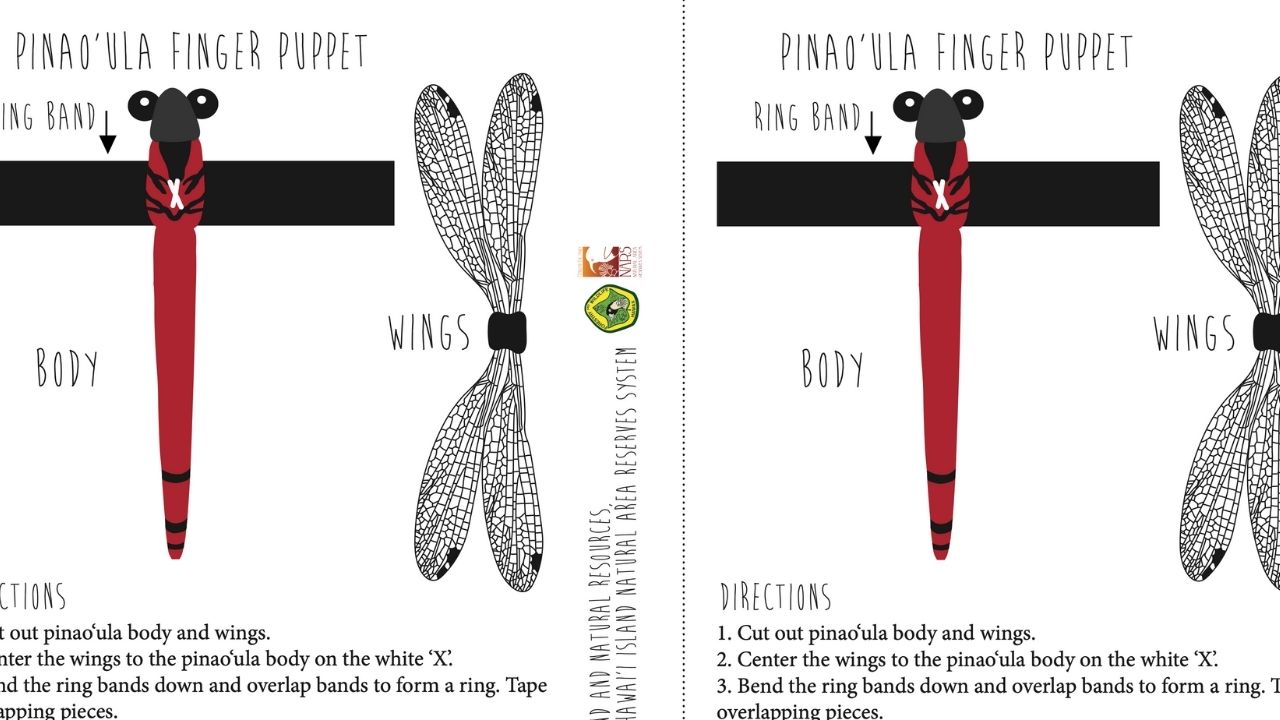
Paper craft activity: Make your own pinao ʻula finger puppet
Additional Resources
For more information and references: Damselflies and Dragonflies- State Wildlife Action Plan Fact Sheet
